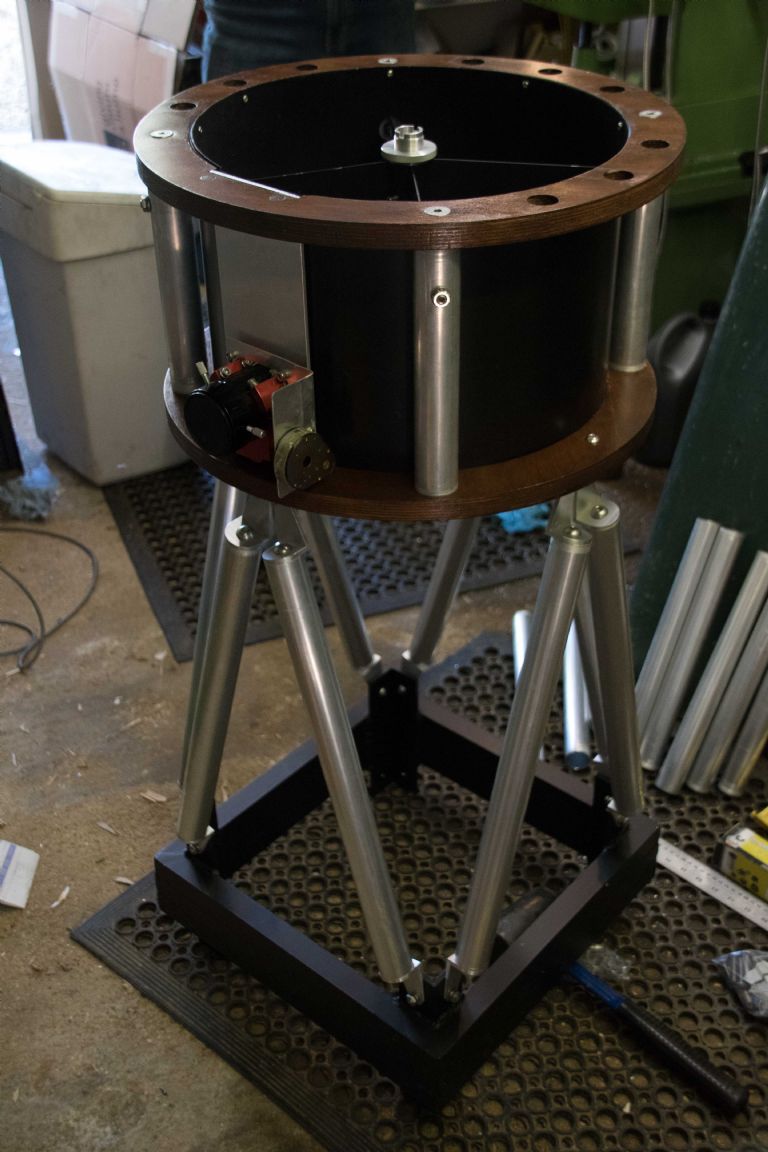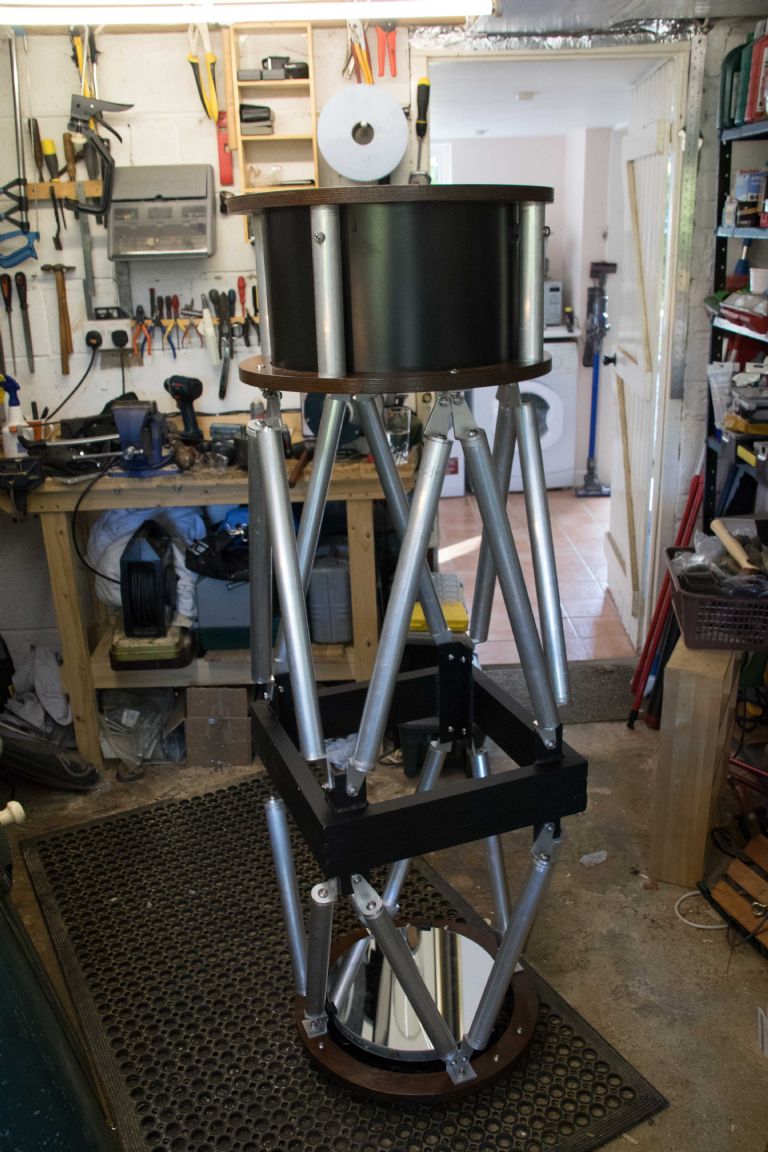One happy astronomer here  (Wondered where the spike in web traffic to my site came from, but all obvious now!
(Wondered where the spike in web traffic to my site came from, but all obvious now! 
Stuart has done a great job in helping out in machining the brackets to hold everything together for me, and it does look the business when all assembled – much better than anything I could have done with a hacksaw and drill press!
So some further technical stuff for you all follows:
The whole aim is to rebuild to create a much more stable scope than the original 1mm Al tube that it started life in (it was an Orion SPX350 originally) – any weight hanging off the focuser threw the collimation out – critical for fast scopes.
Primary Mirror is a 350mm f4.6 from Orion Optics (actually f4.52 -= 1582mm fl). That's sitting in a 9 point cell from Orion as well. Made of Pyrex, it's about 25mm thick, and has a peak-valley error of about 1/12lambda, RMS ~1/30lambda (lambda being 500nm) – so it's a very good mirror.
The secondary is a 89mm minor axis – and quite right in that there might be a bit of a loss of contrast with size of the secondary, but the scope is designed for imaging and so the calcs are designed to give me a fully illuminated field for anything up to a KAF8300 size sensor which has a 22.5mm diagonal.
It's put together in a serrurier arrangement, though I didn't go down the full structural analysis route of working out the deformations – rather aiming for equal moments around the central brace (which is 3x50mm Al box section welded together, with 5mm equal angle corners for the supports – all expertly welded by another talented local resident  . The tube is 1.5", 16swg, so the bending moment should be within tolerance.
. The tube is 1.5", 16swg, so the bending moment should be within tolerance.
Good spot on the Moonlite CR2 focuser! The secondary spider and mount (the bit that is hidden inside the top section) is custom made by a German chap who makes the same items for TS Optics – it is one of the best spiders I have seen and is built with secondary offset already in place. The focuser is mounted on 4mm Al plate screwed into a cut out section in the top rings. There is a large sheet of sheet plastic lining the inside of the secondary cage and this is lined with black flock to reduce light scatter – I will need to flock everything else as well once it's confirmed to be working.
The things remaining to do:
* Re-mill the tubes – design calcs were fairly good, but not spot on (it's really hard given the positioning of the primary in the mount and the secondary's thickness). The first test put the focal plane at 32mm above the focuser's lowest position – this needs to be about 60-65mm to fit a camera in, so we'll have to have to reduce the lengths a little – but a normal way of getting an exact result. (At least we didn't cut too short first time round….).
* Do the dovetail – as Stuart said, this is to mount on a Losmandy Titan, which uses a 4" wide, 60 degree dovetail mount (a D-series dovetail – fairly standard for astronomy). That'll attach to the centre brace section.
* Find a seamster/seamstress to make shrouds top and bottom to stop extraneous light entering from the side…
* Flock everything!
* Electronics/heaters/fans/focuser etc need to be mounted, wired in and so on once it's up and running.
Think that's about it – I should really write this up for my own site…!
Cheers
Graeme
 Michael Gilligan.
Michael Gilligan.





 Not sure on the mount, I know he was using a Losmandy Titan, but I believe he may have upgraded this year.
Not sure on the mount, I know he was using a Losmandy Titan, but I believe he may have upgraded this year.


